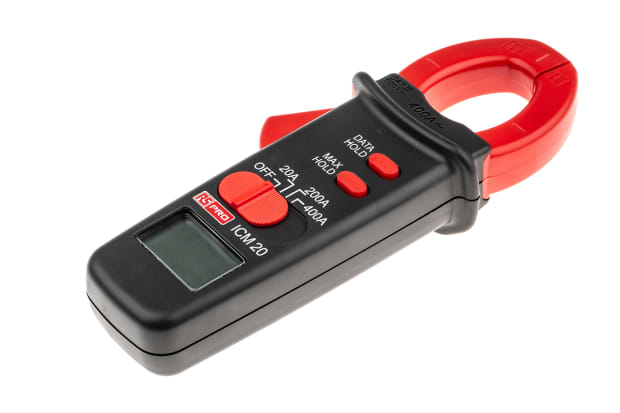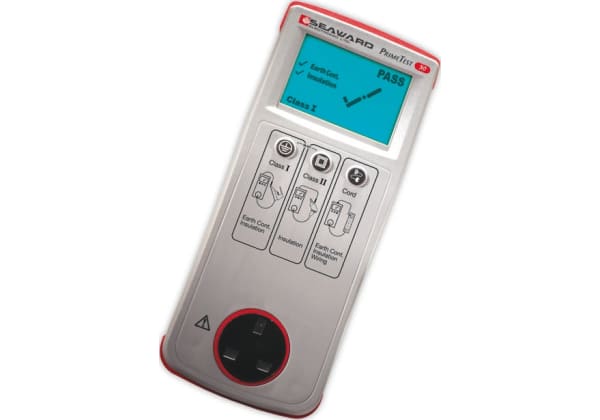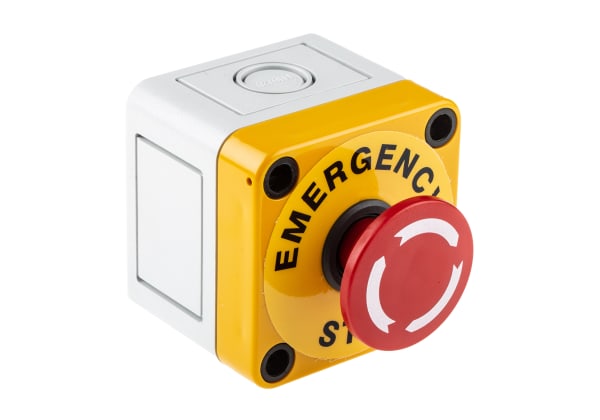- Published 24 Jan 2023
- Last Modified 29 Aug 2023
- 10 min
Digital Multimeters and How to Use Them
Not sure how to use a digital multimeter? Our guide also shows you how to read a multimeter and shares key products.
What is a Digital Multimeter?
A multimeter, also known as a digital multimeter (DMM) or multitester, is a versatile tool used for measuring and displaying important parameters in electronics and electrical circuits. It combines the functionalities of a voltmeter, ammeter, and ohmmeter into a single convenient unit. A multimeter allows you to measure voltage (V), current (A), and resistance (in Ohms), which are crucial in understanding the behaviour of electronic components and circuits.
- Voltage refers to the difference in electrical potential between two points, representing the potential energy of an electric field to drive current through a conductor or circuit
- Current, on the other hand, measures the active rate of electrical charge flow through a component or circuit, usually carried by electrons moving through a wire
- Resistance quantifies the extent to which a device or material limits the flow of electrical current
To use a multimeter effectively, probes and test leads are typically connected to the device that facilitate the transfer of signals to and from the components, contacts, wires, or traces being tested.
What is a Digital Multimeter Used for?
Multimeters are versatile tools used extensively across professional fields and offer a wide range of features, with true-RMS (Root Means Square) multimeters being particularly valuable due to their ability to accurately measure both sinusoidal and non-sinusoidal AC waveforms. Their practicality spans from fieldwork to production testing, making them indispensable in today's electronics industry. Common uses include:
- Device or circuit voltage measurement
- Component resistance measurements
- Measuring the current flowing through a circuit
- Measuring continuity on components such as switches, connections, and fuses
- Testing diodes
- Measuring a capacitor's value
- Measuring the frequency of an AC signal
- Temperature measurement (provided that the multimeter has the correct input)
Each of these functions will involve using slightly different methodologies, functions, and settings on your digital multimeter.
In summary, a multimeter, or digital multimeter, is a valuable tool that enables precise measurement and display of voltage, current, and resistance in electronics and electrical circuits. It offers versatility and a compact design making it an essential instrument for professionals and enthusiasts alike.
How Do I Know What Multimeter to Use?
Multimeters are essential measurement tools used daily and are important within various professional applications. Available in different models and form factors, they offer a range of different features and modes to suit your specific needs and electrical work. With the ability to measure both AC and DC currents, modern multimeters ensure compatibility with a wide range of electrical devices and components.
In addition to this, certain types of multimeters can also go beyond the basics by providing additional functions such as diode and continuity tests, accompanied by audible alarms to indicate readings being taken. More advanced models offer capabilities to test capacitance and inductance in relevant electrical components.
Multimeters come in two main designs: handheld devices and bench meters
- Handheld multimeters are portable and ideal for fieldwork, allowing access to hard-to-reach circuits and machinery
- Bench meters, also known as bench testers, are intended for semi-permanent installation on work surfaces. While bulkier and less portable, they often offer higher accuracy and detailed digital readout displays compared to their handheld counterparts. They can also be remote-controlled while being capable of making many measurements per second which makes them suitable for production test applications
One notable type of multimeter is the true-RMS (TRMS) digital multimeter, which is preferred over standard multimeters
True-RMS devices accurately measure both sinusoidal and non-sinusoidal AC waveforms by calculating the equivalent DC current value, whereas standard averaging multimeters can lose up to 40% accuracy when measuring non-sinusoidal waveforms. As non-sinusoidal waves have become more prevalent in circuits, the need for true-RMS multimeters has increased as the preferred device for testing. True-RMS provide vital and excellent results in various applications such as electronic ballasts, HVAC systems, variable-speed motor drives, and solid-state environments.
How to Safely Use a Digital Multimeter
To use a digital multimeter (DMM) safely and effectively you must understand the importance of safety checks, the pros and cons of fused and non-fused test leads, the significance of built-in fuses, and the measurement categories for different applications. Also important is that you understand what you are measuring and how to use and set up all the various functions.
You can use the image below as a generalised multimeter user guide to familiarise yourself with the basic settings, probes, and functions:

Safety Checks for a Digital Multimeter
To ensure your safety, always verify that your digital multimeter is in proper working order before taking measurements. Follow these safety checks:
- Wear appropriate personal protective equipment (PPE)
- Perform a visual inspection to identify any damage, cracks, or potential hazards
- Verify the correct operation of the multimeter using a proving unit or known voltage source
- Continuously monitor the instrument during use for any warnings or irregularities
Fused vs Non-Fused Multimeter Test Leads
Understanding the pros and cons of fused and non-fused test leads is important.
Fused Test Leads:
While fused test leads provide extra protection, they have certain considerations to keep in mind:
- A blown fuse may falsely indicate that a measured circuit is dead when it is live. Using a proving unit helps address this concern
- Fused leads can introduce additional resistance, potentially affecting reading accuracy for resistance measurements. Conduct a risk assessment to determine the most suitable option for your application
Built-In Fuses:
Any multimeter or digital multimeter used to measure current must have an internal fuse to protect both the user and the meter from excessive currents. This means it’s vital to replace a blown fuse with the same specification to ensure ongoing protection against short circuits. Failure to do so can lead to significant injury.
Measurement Categories
Digital multimeters are categorised based on their suitability for different locations, voltages, and circuit types. You will need to select the appropriate category for your specific application:
- Measurement Category I: Ideal for testing circuits not directly connected to the mains or specially protected internal mains-derived circuits
- Measurement Category II: Perfect for testing circuits directly connected to low-voltage installations, such as domestic appliances and smaller, portable tools
- Measurement Category III: Recommended for testing building installations, including wiring, circuit breakers, distribution boards, and industrial equipment
- Measurement Category IV: Designed for testing at the source of low-voltage installations, like electricity meters, ripple control units, and overcurrent protection devices
Calibrated Multimeters
Calibrated multimeters are multimeters that have completed a calibration process which guarantees their measurement accuracy. The calibration is processed by a specialised calibration laboratory or facility that will ensure the measurement readings are compared to very accurate reference standards like traceable voltage sources, resistors, and current sources. This process verifies and adjusts the accuracy of a multimeter's measurement.
The calibration of a multimeter is vital when precise measurements are critical for example in, engineering, manufacturing, and quality control.
All calibrated multimeters will be supplied with a valid calibration certificate which backs up all required information. Calibration date, standards used, adjustments made during the process, Identification, measurement results, the procedure, laboratory information, traceability, authorisation plus any uncertainty of measurements. The calibration certificate is your proof that your multimeter meets all necessary calibration accuracy standards.
Types of Calibration Certification
United Kingdom Accreditation Service (UKAS) is the UK’s national accreditation organisation responsible for assessing and accrediting companies, suppliers, laboratories, and others that provide calibration services, testing, inspection plus certification services. UKAS is internationally recognised for all its accreditation services.
RS is a recognised company for supplying calibrated multimeters certified to deliver UKAS calibration certificates and RSCAL certification.
RS PRO RS Calibrated RS 14 Handheld Digital Multimeter.
RS PRO UKAS Calibrated RS14 Handheld Digital Multimeter.
How to Read a Digital Multimeter
In order for you to correctly read a digital multimeter it is necessary that you understand the basic symbols that are identified on standard electronic schematics and outputs on your digital multimeter (DMM).
Digital multimeters are handheld tools that measure capacitance, voltage, electrical current and resistance with diode and continuity check.
Watch our handy video which is a “how-to guide” on reading a handheld digital multimeter.
For an example of our RS PRO bench multimeters or bench testers, have a look at this video that explains all the benefits, the wide range of features, multiple functions, and testing capabilities.
RS PRO IDM8341 Bench Digital Multimeter.
What is the Best Digital Multimeter?
The best digital multimeter to buy in terms of value, functions, and features will vary from customer to customer. In most cases, it will depend largely on what you need the multimeter to measure and in what environments and applications.
Some popular options include:

Fluke Digital Multimeters
Fluke digital multimeters are a widely used type of high-quality diagnostic multimeter. They are a common brand choice across a wide range of electronics applications and industries.
Key Information:
- Fluke products tend to offer multiple functions and capabilities for testing numerous components and circuits, with simultaneous voltage/resistance readouts displayed either numerically or graphically via their large, easy-to-read LCD screens
- Depending on the exact model, a Fluke multimeter may also offer the ability to measure other useful parameters such as duty cycles, frequencies, pressure, temperature and humidity
- Lifetime guarantees on many models
Fluke 179 Handheld Digital Multimeter
Fluke 175 Handheld Digital Multimeter

Auto-Ranging Multimeters
Autoranging multimeters are among the most user-friendly of all designs; they automatically adjust their measurement ranges to suit the type of readings you are trying to gauge or test. It is also worth noting that most DMMs are auto-ranging nowadays.
Key Information:
- You don’t need to know what general value range the voltage, resistance, or capacitance of the component or device you are gauging falls into before testing. The DMM will automatically pick up on this and you will get an accurate reading without having to manually dial in the settings beforehand
- Autoranging multimeters offer a huge advantage when dealing with faulty components. Even if you are familiar with electrical component colour codes and know what range settings a device should fall into, electrical faults can throw these out dramatically
RS PRO RS14 Handheld Digital Multimeter
RS PRO RS-660 Handheld Digital Multimeter

Clamp Multimeters
Clamp multimeters combine the functions of a traditional DMM with that of a current sensor. Integrated jaws allow users to attach the tool to a wire or other conductor anywhere in the circuit without isolating or disconnecting a specific component first.
Key information:
- The ability of a clamp model to take an in-line current measurement without directly contacting a conductor (e.g. by cutting into a wire to insert test leads) makes them a popular choice for higher-current applications, both in terms of safety and convenience
What is the Difference Between Analogue and Digital Multimeters?
Analogue multimeters perform many of the same sorts of functions as their digital counterparts, but use traditional dials to zero in on voltage, current and resistance settings. While you can still buy analogue multimeters, you are more likely to use digital nowadays. As a result, analogue multimeters tend to be much less widely available than modern digital versions, which are generally more efficient, accurate and cost-effective.
Analogue meters can be useful on rapidly fluctuating circuits as the needle can be observed more easily than a rapidly changing digital display. In addition, analogue meters tend to have a lower input impedance (DMMs are typically 10 Megohms) which is useful for measuring voltages in certain types of circuits. Although, digital multimeters help to address these needs. Some offer an analogue bar graph to simulate an analogue dial. Certain models also include a low impedance (low Z) mode to reduce the possibility of false readings due to ghost voltages and improve the accuracy of measurements.
Analogue
Digital



